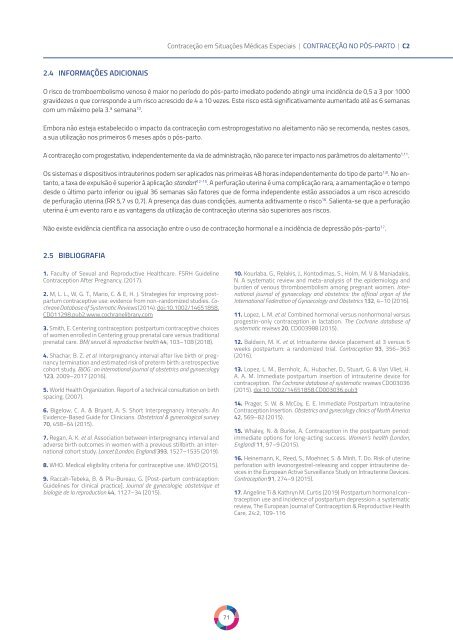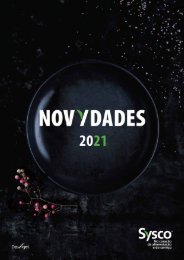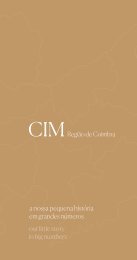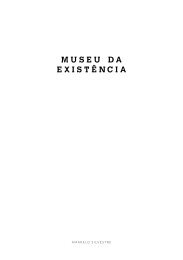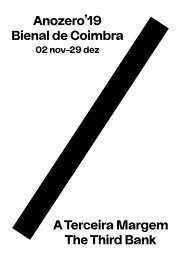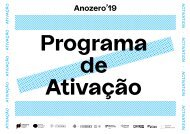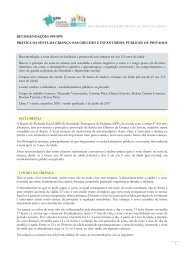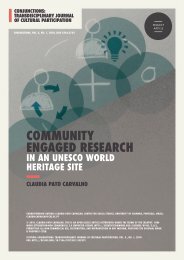CONSENSO SOBRE CONTRACEÇÃO 2020
You also want an ePaper? Increase the reach of your titles
YUMPU automatically turns print PDFs into web optimized ePapers that Google loves.
Contraceção em Situações Médicas Especiais | <strong>CONTRACEÇÃO</strong> NO PÓS-PARTO | C2<br />
2.4 INFORMAÇÕES ADICIONAIS<br />
O risco de tromboembolismo venoso é maior no período do pós-parto imediato podendo atingir uma incidência de 0,5 a 3 por 1000<br />
gravidezes o que corresponde a um risco acrescido de 4 a 10 vezes. Este risco está significativamente aumentado até as 6 semanas<br />
com um máximo pela 3.ª semana 10 .<br />
Embora não esteja estabelecido o impacto da contraceção com estroprogestativo no aleitamento não se recomenda, nestes casos,<br />
a sua utilização nos primeiros 6 meses após o pós-parto.<br />
A contraceção com progestativo, independentemente da via de administração, não parece ter impacto nos parâmetros do aleitamento 1,11 .<br />
Os sistemas e dispositivos intrauterinos podem ser aplicados nas primeiras 48 horas independentemente do tipo de parto 1,8 . No entanto,<br />
a taxa de expulsão é superior à aplicação standart 12-15 . A perfuração uterina é uma complicação rara, a amamentação e o tempo<br />
desde o último parto inferior ou igual 36 semanas são fatores que de forma independente estão associados a um risco acrescido<br />
de perfuração uterina (RR 5,7 vs 0,7). A presença das duas condições, aumenta aditivamente o risco 16 . Salienta-se que a perfuração<br />
uterina é um evento raro e as vantagens da utilização de contraceção uterina são superiores aos riscos.<br />
Não existe evidência científica na associação entre o uso de contraceção hormonal e a incidência de depressão pós-parto 17 .<br />
2.5 BIBLIOGRAFIA<br />
1. Faculty of Sexual and Reproductive Healthcare. FSRH Guideline<br />
Contraception After Pregnancy. (2017).<br />
2. M, L. L., W, G. T., Mario, C. & E, H. J. Strategies for improving postpartum<br />
contraceptive use: evidence from non-randomized studies. Cochrane<br />
Database of Systematic Reviews (2014). doi:10.1002/14651858.<br />
CD011298.pub2.www.cochranelibrary.com<br />
3. Smith, E. Centering contraception: postpartum contraceptive choices<br />
of women enrolled in Centering group prenatal care versus traditional<br />
prenatal care. BMJ sexual & reproductive health 44, 103–108 (2018).<br />
4. Shachar, B. Z. et al. Interpregnancy interval after live birth or pregnancy<br />
termination and estimated risk of preterm birth: a retrospective<br />
cohort study. BJOG : an international journal of obstetrics and gynaecology<br />
123, 2009–2017 (2016).<br />
5. World Health Organization. Report of a technical consultation on birth<br />
spacing. (2007).<br />
6. Bigelow, C. A. & Bryant, A. S. Short Interpregnancy Intervals: An<br />
Evidence-Based Guide for Clinicians. Obstetrical & gynecological survey<br />
70, 458–64 (2015).<br />
7. Regan, A. K. et al. Association between interpregnancy interval and<br />
adverse birth outcomes in women with a previous stillbirth: an international<br />
cohort study. Lancet (London, England) 393, 1527–1535 (2019).<br />
8. WHO. Medical eligibility criteria for contraceptive use. WHO (2015).<br />
9. Raccah-Tebeka, B. & Plu-Bureau, G. [Post-partum contraception:<br />
Guidelines for clinical practice]. Journal de gynecologie, obstetrique et<br />
biologie de la reproduction 44, 1127–34 (2015).<br />
10. Kourlaba, G., Relakis, J., Kontodimas, S., Holm, M. V & Maniadakis,<br />
N. A systematic review and meta-analysis of the epidemiology and<br />
burden of venous thromboembolism among pregnant women. International<br />
journal of gynaecology and obstetrics: the official organ of the<br />
International Federation of Gynaecology and Obstetrics 132, 4–10 (2016).<br />
11. Lopez, L. M. et al. Combined hormonal versus nonhormonal versus<br />
progestin-only contraception in lactation. The Cochrane database of<br />
systematic reviews 20, CD003988 (2015).<br />
12. Baldwin, M. K. et al. Intrauterine device placement at 3 versus 6<br />
weeks postpartum: a randomized trial. Contraception 93, 356–363<br />
(2016).<br />
13. Lopez, L. M., Bernholc, A., Hubacher, D., Stuart, G. & Van Vliet, H.<br />
A. A. M. Immediate postpartum insertion of intrauterine device for<br />
contraception. The Cochrane database of systematic reviews CD003036<br />
(2015). doi:10.1002/14651858.CD003036.pub3<br />
14. Prager, S. W. & McCoy, E. E. Immediate Postpartum Intrauterine<br />
Contraception Insertion. Obstetrics and gynecology clinics of North America<br />
42, 569–82 (2015).<br />
15. Whaley, N. & Burke, A. Contraception in the postpartum period:<br />
immediate options for long-acting success. Women’s health (London,<br />
England) 11, 97–9 (2015).<br />
16. Heinemann, K., Reed, S., Moehner, S. & Minh, T. Do. Risk of uterine<br />
perforation with levonorgestrel-releasing and copper intrauterine devices<br />
in the European Active Surveillance Study on Intrauterine Devices.<br />
Contraception 91, 274–9 (2015).<br />
17. Angeline Ti & Kathryn M. Curtis (2019) Postpartum hormonal contraception<br />
use and incidence of postpartum depression: a systematic<br />
review, The European Journal of Contraception & Reproductive Health<br />
Care, 24:2, 109-116<br />
71


